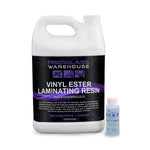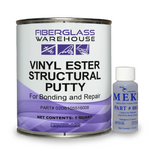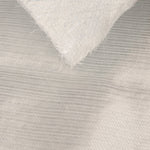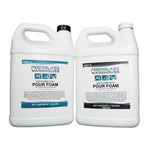You have no items in your shopping cart.
If you own a boat you may be familiar with blisters. Blisters are typically a cosmetic problem but can be worse if it reaches the fiberglass laminate below. They occur on the boat hull. There may be just a few or there could be hundreds of them. A blister is a de-bond of paint or other coating from the part surface. It is an undesirable rounded elevation of the surface of a plastic with boundaries that are more or less sharply defined. It resembles a blister on the human skin.
Why Do Blisters Occur?
How do blisters occur? Through osmosis. Polyester resin and gel coat are fairly water permeable. Water does pass through though and if there are small voids it can get into them. The water has a chemical reaction with the resin used for making the hull. It creates an acidic liquid that needs more water to reduce acidity. This causes it to expand and thus creating a blister.
What to Do First
If you see blisters on your hull, do not panic. First, check out how severe the problem is. The best time to check is right after the hull is removed from the water. Shortly after removing the boat, the blisters will deflate and you will not be able to see the extent of the problem. If you are not around when the boat is removed from the water, you can lightly sand the paint with a coarse sandpaper. The sandpaper should get the raised part of the blister so you can identify where they are.
Getting Rid of the Damage
First, break open the blisters with a utility knife, chisel, drill, grinder etc . It is important to wear safety glasses and safety clothing when doing this. The liquid inside of the blister may come out forcefully and you do not want to end up with it in your eyes. Once the blister is open, tap around the edges to make sure you have completely opened the damaged area. Wash the area to get rid of contaminants. You could use rubbing alcohol (isopropyl) and clean paper towels. Use a drummel or grinding bit to grind away the rotten, decomposed material. You will want to get it all out of there. Keep cleaning out the area until you reach the good gel coat layer. If the laminate looks damaged you will need to get rid of layers of that also until you reach the healthy fiberglass material. You will know if the laminate is good if you do not see any white fibers. It will be dark and transparent. Once the bad material is ground out you will have what looks like a dimple in the hull.
You can use a garden hose to wash the hull but a power washer is preferred. You will want to get rid of any leftover acidic liquid, rotten fiberglass and other contaminants. After washing it well, let it dry out for several days to a week. You should repeat the power washing process again letting it dry out for another week afterwards. Making sure the hull is completely dry is absolutely IMPERATIVE.
You can check to see if the hull is dry by either using an expensive moisture meter or by taking the inexpensive route and taping some plastic to the area. If you choose the plastic option, leave the piece on for awhile. If the hull is still drying, there will be condensation that comes out onto the plastic. Take the plastic off, dry the area and re-tape. Repeat until there is no more condensation on the plastic. To speed up the drying process, you could tent the bottom half of the hull, taping some plastic at the water line, and place fans underneath the plastic. Make sure anything wet such as sails are removed from the boat.
The Repair
Once you are positive that the area is 100% dry you can start the repair. Epoxy resin is the preferred resin for this repair. Vinylester resin could also be used. Mix a small batch of resin and apply a layer with a brush to seal the area. Once the epoxy is partially cured (stiff but still tacky) you can replace any fiberglass that was ground away. You can use a mid size cloth such as a 6oz, 7.5 oz. or 10 oz. weight. (If the fiberglass laminate was not damaged you can skip this step). Cut the fiberglass into round pieces that are a little bit bigger than the depressed area. Add epoxy resin to the cloth. Test out one or two blisters to practice. You want to know what you are doing. This goes for when you are adding epoxy putty (which comes later). It is definitely best to practice.
Next, mix a batch of epoxy resin with a filler such as collodial silica. This is also known as Cabosil or Aerosil. Mix filler in until it becomes a creamy peanut butter consistency. Using a spreader or putty knife, apply the mixture. Do not over fill the depressions. You will want it flush or slightly below flush because the epoxy/cabosil mixture is very hard to sand. The more sanding you have the more time consuming the job will be. Also, you do not need to worry about epoxy resin shrinking. Let it cure overnight. Sand until flush. Finish with another coat of epoxy resin (no filler added) over the top. You can then add whatever bottom paint you choose.
Be aware that more blisters can arise but hopefully this work will solve the problem.
*These are general guidelines only. Not every repair is the same. Practice to figure out what works best for your particular project. *
For more fiberglass information, visit www.fiberglasswarehouse.com










I didn’t know that fiberglass blisters were repairable! My boat has been having issues with blisters forever now, and they’ve kept me from putting my boat in the water for over a year now. I haven’t known how to deal with them until now, so I’m super excited to go and try and fix them. Thank for sharing!
REPLY from fgwarehouse: Good Luck on repairing your boat!